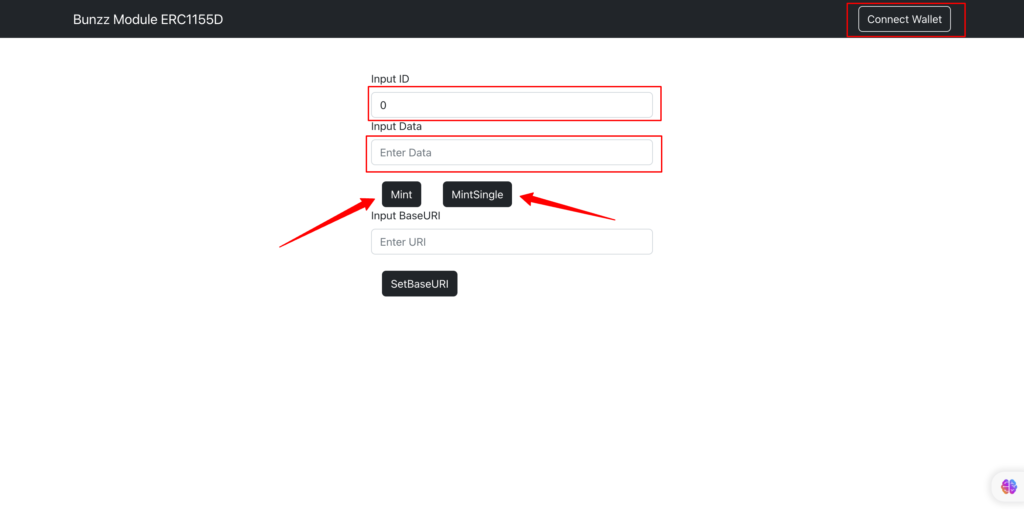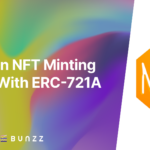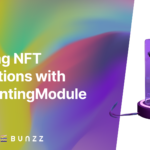Many aspects of our lives have been transformed by blockchain technology, including how we exchange value, interact with digital assets, and own unique digital assets. Non-fungible Tokens (NFTs) are a revolutionary concept that enables us to create and own unique digital assets that can be bought, sold, and traded like any other asset.
This guide will explore creating an NFT Minting DApp using ERC-1155D, an Ethereum blockchain standard for NFTs.
What is ERC-1155D?
ERC1155D is a fully backward compatible and compliant implementation of ERC1155 that is completely non-fungible in the way ERC721 is. It offers a unique identifier and owner for each token and gas efficiency than every other existing NFT implementation.
Developers can also determine token ownership more easily with ERC1155D than with a traditional ERC721.
ERC-1155D Characteristics:
- Fully backward compatible and fully compliant implementation of ERC1155.
- Completely non-fungible, with each token having a unique identifier and owner.
- Offers high gas efficiency, with a mint cost of under 51,000 gas, which outperforms every other existing NFT implementation by a large margin.
- Transfer cost under 35,000 gas, outperforming other NFT contracts and some ERC20 transfer costs.
- Can defer minting costs like ERC721A, making it cheaper to mint tokens.
- Allows for easier determination of token ownership than a traditional ERC721 implementation.
Creating NFT Minting DApp with ERC-1155D
An NFT Minting DApp is a decentralized application allowing users to create or ” mint” their unique NFTs. These NFTs can be digital art, music, videos, or tweets. Once minted, an NFT is stored on the blockchain and can be traded or sold like any other asset.
Building an NFT minting DApp based on the ERC-721A token standard can be a complex process, but with the help of the Bunzz boilerplate, it can be made much easier.
The boilerplate was built using the following:
- React.js for the Front-End and user interface
- ERC-1155D Smart Contract deployed from Bunzz
- Web3.js and ethers.js to interact with the smart contract.
- Binance Smart Chain (BSC) Testnet
Let’s walk through the steps of using the Bunzz boilerplate, which provides a pre-written codebase that can be easily customized to meet your specific needs, allowing you to save time, test, and deploy your DApp to a blockchain network quickly.
Using the ERC-1155D NFT Minting Boilerplate
Here are key steps to start with the NFT minting Boilerplate and ensure you have everything needed to run and customize the boilerplate for your use case:
1. Clone the GitHub repository of the NFT minting boilerplate to your local computer.

2. Open the cloned repository using your preferred IDE, such as Visual Studio Code.
3. Install the necessary NPM packages by running npm install or yarn install in the terminal.

4. Deploy the ERC-1155D smart contract module from Bunzz

5. Copy the ABI and smart contract address from the Bunzz dashboard.

6. Open the erc1155D.json file and replace the existing ABI content with the one you copied from the Bunzz dashboard.

7. Open the constants.js file and locate the smart contract address variable. Replace the contract address in the file with the one you copied from the Bunzz dashboard.

PS: 56 represents the BSC Mainnet ID, while 97 is the BSC Testnet ID
8. Start the app by running npm start or yarn start. The DApp will look exactly like the image below.

9. Connect Wallet and input the needed fields to be minted, then click the “Mint” or “MintSingle” button, depending on your use case.

These steps will give you everything you need to build and customize an NFT minting DApp for your use case using the ERC-1155D boilerplate. You can change the interface or add new features by editing and customizing the boilerplate code to fit your specific NFT minting use case.
——————
By following these steps and using the boilerplate, you will have everything you need to build and customize a vesting wallet for your use case.
We can’t wait to see what you’ll build; if you follow these steps and get stuck or have any questions, feel free to reach out on Discord or send a DM on Twitter.







